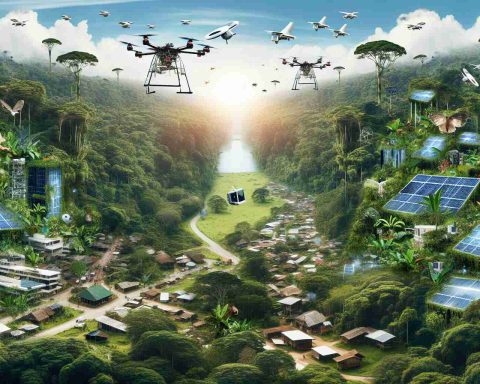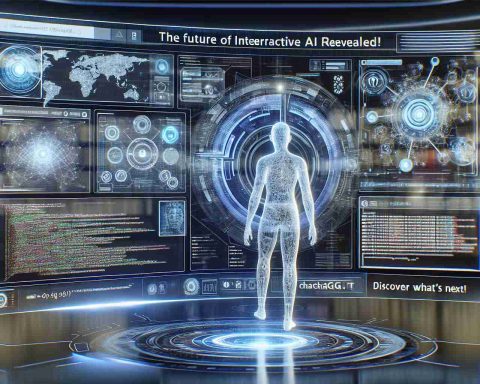Recent advancements in artificial intelligence have led to the development of two innovative models known as o1 and o1-mini. According to reports, these models are designed to tackle more complex scientific, coding, and mathematical challenges than their predecessors. Their unique training allows them to engage in deeper contemplation on problems before formulating answers, resembling human thought processes.
Starting Thursday, users can access the o1 model through the ChatGPT platform and its API. The training regimen for these AI systems encourages a thorough examination of various problem-solving strategies. This approach not only helps them refine their cognitive abilities but also enables them to learn from mistakes encountered along the way.
The implications of these developments are significant, as they mark a substantial leap in the capabilities of AI technology. By enhancing the way machines think and solve problems, these new models could pave the way for improved applications in numerous fields, including research, programming, and data analysis. As the landscape of artificial intelligence evolves, the potential for these advanced models to contribute meaningfully to complex problem-solving tasks becomes ever more promising.
In summary, the o1 and o1-mini models represent a crucial step forward in the realm of AI, emphasizing the importance of reflective thinking in achieving sophisticated outcomes.
New AI Models Revolutionize Problem Solving: The Transformative Power of o1 and o1-mini
In the rapidly advancing field of artificial intelligence, the introduction of new models such as o1 and o1-mini has generated considerable excitement. These AI systems not only represent a leap in computational capabilities but are also anticipated to transform the ways in which complex problems across various domains are approached and solved.
What makes the o1 and o1-mini models unique?
The o1 and o1-mini models are grounded in advanced architectures that utilize techniques like deep learning and reinforcement learning. Unlike earlier AI frameworks, these models are designed to simulate human-like reasoning rather than relying purely on vast datasets for pattern recognition. By integrating a mechanism for self-assessment, they can evaluate the effectiveness of different strategies over time, leading to more efficient solutions.
What are the key challenges or controversies associated with these models?
One significant challenge is the potential for bias in decision-making. As these models learn from existing data, they may inadvertently inherit and even amplify biases present in their training datasets. Another concern revolves around the ethical implications of deploying such powerful AI systems. The increased reliance on AI for decision-making raises questions regarding transparency and accountability. Furthermore, the complexity of these models can make it difficult for users to interpret how decisions are reached, leading to a “black box” effect in AI applications.
What are the advantages and disadvantages of these new AI models?
The advantages of o1 and o1-mini include:
– Enhanced Problem-Solving Ability: Their ability to analyze and reason through problems in a human-like manner can lead to breakthroughs in various industries.
– Learning from Mistakes: The models’ self-correcting mechanisms allow them to improve continuously, which can significantly enhance their effectiveness over time.
– Wide Applicability: They are applicable in diverse fields such as scientific research, programming, simulation modeling, and even creative problem-solving.
However, there are also disadvantages:
– Dependence on Quality of Data: If trained on biased or poor-quality datasets, the models could generate flawed solutions that perpetuate existing issues.
– Interpretability Issues: The decisions made by these models can be difficult to trace back to specific inputs, complicating accountability.
– Cost of Implementation: The development and maintenance of such advanced AI systems can be resource-intensive, limiting accessibility for smaller organizations.
What future directions can we expect from AI models like o1 and o1-mini?
As these models continue to evolve, we can expect further improvements in their ability to understand and solve not only structured problems but also unstructured and ambiguous ones. The integration of multi-modal learning, which combines data from text, images, and other formats, is one potential area for future enhancement. Additionally, increased collaboration between AI systems and human experts is likely to become more prevalent, allowing for a symbiotic relationship that enhances overall problem-solving capabilities.
Conclusion
The o1 and o1-mini AI models represent a significant advancement in artificial intelligence, demonstrating the capacity for reflective and nuanced problem-solving. However, as we embrace these technologies, it is critical to remain vigilant about the challenges and ethical considerations they bring. Striking the right balance between harnessing the power of AI and maintaining responsibility in its application will be essential to fully unlock its potential.
For further information on the role of advanced AI in problem-solving, visit MIT Technology Review.

















